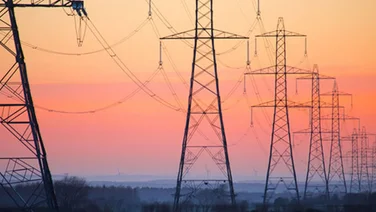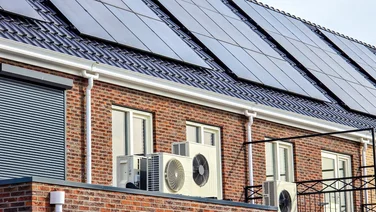- The Viking Wind Farm will produce 1.8TWh of energy annually
- It will be able to power nearly half a million homes per year
- A 260km subsea cable will transport the electricity to mainland Britain

Viking has pushed the UK over the 30GW offshore and onshore wind capacity mark – credit SSE Renewables & Viking Energy
Two clean energy projects designed to connect the Shetland Islands to Britain’s energy grid and enable the flow of clean energy to the rest of the UK have been completed.
The building of the Viking Wind Farm and a subsea transmission link is the result of a £1bn investment by SSE, as part of their £20.5bn commitment to improve UK clean energy infrastructure by 2027.
The connection will not only enable clean energy to flow from the Shetland Islands to the rest of the UK, but will also allow for energy to flow in the other direction as well.
The projects have already created 650 local jobs and boosted the Islands’ economy by £125mn. It marks the first time ever that the Shetland islands have been linked to Britain’s energy grid.
First Minister of Scotland, John Swinney, described the project as “a significant step in unlocking the green energy potential of the Shetland Islands.
“These developments will not only aid us in our efforts to decarbonise our energy system, but help to stimulate sustainable economic growth in the local area.
“It is welcome that Scotland’s onshore wind capacity continues to expand. This is a vital component of our mission to bring about a just transition to net zero”.
The Viking Wind Farm, or Viking for short and developed by SSE Renewables, is forecast to become the UK’s most productive onshore wind farm and is a groundbreaking step in the journey towards sustainable energy.
It boasts 103 Vestas turbines, has an installed capacity of 443MW, and is expected to produce 1.8TWh of energy per year.
Based on the annual British average domestic household consumption of 3.781MWh, as published by the Department of Business, Energy and Industrial Strategy (BEIS), and estimated total output of Viking at 1,796.35 GWh annually, it will produce enough energy to power nearly half a million (475,099) homes yearly.
The subsea transmission link will transport the electricity generated from the wind farm from Shetland to the mainland, with a cable connecting a converter station at Kergord in Shetland and a switching station at Noss Head on mainland Scotland.
The 260km high-voltage direct current (HVDC) link has been installed by SSEN Transmission in three sections, using a specially designed cable-laying ship called the NKT Victoria.
Speaking about the Viking Wind Farm, UK energy secretary Ed Miliband said: “By Switching on Viking, hundreds of thousands of homes in the Shetlands and right across the country will benefit from cheap, homegrown energy, and this project has created jobs and growth for local communities.
“This shows why we need more developments like this to make Britain a clean energy superpower – and that is why we lifted the onshore wind farm ban in our first 72 hours in Government.
“This will be a crucial part of delivering our mission for clean power by 2030 – reducing our reliance on volatile fossil fuel markets, boosting our energy independence and protecting consumers.”
Operating Viking will create 35 permanent jobs on the islands and during its lifetime is expected to contribute £70 million to the local economy, fostering sustainable growth and initiative.
There is also the Viking Community Fund, managed by community representatives and the largest fund for a single British renewable project. It totals over £72mn, the money of which is used to focus on youth programs, housing and transportation. It has nearly supported 200 local projects.
Viking has also tipped the UK’s combined onshore and offshore wind capacity over the 30GW mark, enough to power 26 million homes and reduce carbon emissions by over 35 million tonnes annually.
Dan McGrail, renewable UK chief executive, said: “When the Viking project was first conceived nearly twenty years ago, the UK’s wind capacity stood at less than five gigawatts, and turbines were around 75% less efficient than they are now.
“Reaching the milestone of 30GW is a phenomenal achievement for the entire industry and further underlines the fact that wind is now the backbone of our future energy system, having generated a record 28% of our electricity last year.”
SSE chief executive, Alistair Phillips-Davies, commented: “Delivery of both the Viking Wind Farm and Shetland HVDC Transmission link are big engineering achievements and together represent a major milestone on the UK’s path to a clean energy system.
“But it has taken nearly two decades for these projects to move from concept to completion and if we are serious about delivering clean power by 2030 – less than 2,000 days away – we need to make it much easier and faster to build this kind of mission-critical infrastructure.”






